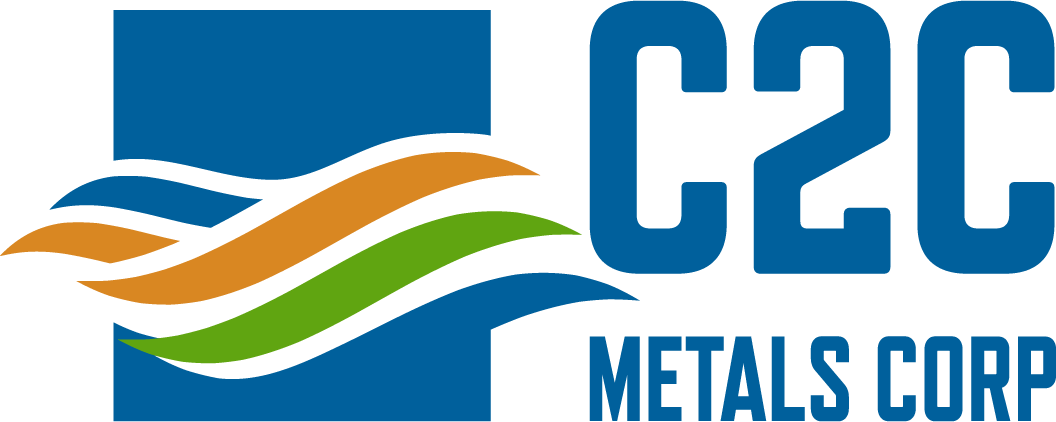Uranium Supply Crisis Deepens as 23% Contract Price Surge Signals Multi-Year Deficit

Uranium sector shows institutional capital influx as World Bank reverses nuclear ban, supply deficits persist, and strategic consolidation accelerates development.
- The uranium sector is undergoing a fundamental transformation as institutional capital barriers dissolve through the World Bank's historic reversal of its nuclear financing prohibition, unlocking multilateral development bank participation that fundamentally alters the risk-return profile for uranium investments.
- Operational milestones across the production landscape demonstrate near-term supply response capabilities, with regulatory approvals enabling complete uranium processing operations and advanced exploration programs utilizing sophisticated survey technologies in tier-one jurisdictions.
- Sophisticated financing structures are emerging across the sector, featuring tiered pricing models with flow-through tax advantages and institutional backing that reduces capital costs while ensuring committed exploration spending aligned with critical mineral development priorities.
- Strategic consolidation activity is accelerating as companies recognize enhanced value through unified asset ownership, while systematic reviews of historical uranium reserves demonstrate substantial resource bases available for development across proven uranium districts.
- Market dynamics reveal significant supply deficits with mine output failing to meet utility demand, creating sustained supply constraints that persist despite long-term contract price increases of over 23% year-on-year, indicating structural underinvestment that cannot be rapidly addressed due to 7-10 year development timelines.
The uranium sector is experiencing a fundamental transformation as institutional capital barriers dissolve and supply constraints intensify. The World Bank's historic policy reversal on nuclear financing creates a compelling investment environment for uranium exposure, combined with operational milestones from active producers and aggressive exploration programs in tier-one jurisdictions.
Developments across exploration, production, and policy sectors demonstrate converging factors that position uranium as a strategic commodity transitioning from cyclical oversupply to structural deficit.
World Bank Nuclear Financing Reversal
The World Bank's reversal of its long-standing prohibition on nuclear project financing represents a watershed moment for uranium sector capital access. This policy shift unlocks multilateral development bank participation in nuclear infrastructure, fundamentally altering the risk-return profile for uranium investments.
"Sovereign and institutional backing fundamentally alters the competitive landscape for United States and allied uranium producers," - Energy Fuels CEO Mark Chalmers.
The correlation between nuclear buildout timelines and uranium demand curves creates direct transmission mechanisms from policy changes to commodity fundamentals.
The magnitude of this transformation becomes evident when analyzing capital costs per gigawatt of nuclear capacity, typically ranging from $6 billion to $10 billion. Multilateral Development Bank participation serves as a cornerstone for blended finance structures, combining project debt with sovereign guarantees to de-risk private investment. This financing architecture has historically proven transformative in hydro and renewable energy sectors, suggesting similar potential for nuclear infrastructure development.
In nuclear energy, this dynamic proves particularly pronounced given the sector's high capital intensity and long development timelines, where access to patient, low-cost capital proves decisive for project economics.
Uranium Milestones on Near-Term Supply Response
Peninsula Energy's regulatory approval for Phase 2 operations at the Lance Project exemplifies the operational progress occurring across the uranium production landscape. Wyoming's Uranium Recovery Program approval permits Peninsula Energy to transfer uranium captured on resin into Phase 2 processing circuits, removing key operational requirements with no further approvals needed for commercial production.
The company has progressed through its operational reset phase, with uranium production on resin recommencing in December 2024. Peninsula continues commissioning activities at the Central Processing Plant while working towards production targets, with stated intentions to produce dried yellowcake during the September quarter.
Standard Uranium's implementation of ExoSphere Multiphysics survey technology at the Davidson River project demonstrates the sophistication of current exploration approaches in tier-one uranium jurisdictions. Standard Uranium completed the first-ever ExoSphere Multiphysics survey grids in the uranium-rich southwest Athabasca Basin region, collecting three types of geophysical data across major conductive corridors.
"Standard Uranium has been working towards this drill program for over three years, and we couldn't be more excited to see the drills turning once again,"- Standard Uranium CEO Jon Bey
Sean Hillacre, President & VP Exploration of Standard Uranium, added the technical significance:
"The newly acquired data from the Multiphysics survey has outlined density anomalies in the basement rock coinciding with known graphitic conductors, which are often indicative of potential zones of hydrothermal alteration of host rocks associated with uranium mineralization events."
This targeting strategy has proven successful through discovery of world-class uranium deposits in the southwest Athabasca Basin. The company has secured all drill permits and signed Exploration Agreements with Clearwater River Dene Nation partners for a 4-6 week drill program scheduled to begin in early September 2025.
Sophisticated Financing Structures
ATHA Energy's $10 million private placement demonstrates sophisticated capital raising strategies designed to appeal to different investor categories while maximizing capital efficiency. ATHA Energy's engagement of Stifel Canada as lead agent provides institutional credibility while the flow-through structure ensures committed exploration spending aligned with Canadian critical mineral development priorities.
"The current macroeconomic environment provides the best conditions we have ever seen for uranium exploration and development" - ATHA Energy CEO Troy Boisjoli
The company intends to use gross proceeds from flow-through shares for exploration expenditures that qualify as Qualifying Expenditures at the Angilak project and other exploration-stage projects.
The proposed merger between Myriad Uranium and Rush Rare Metals exemplifies increasing consolidation activity as companies recognize strategic value in unified asset ownership. Under the arrangement, Myriad would issue one common share for every two Rush shares, with Rush creating a subsidiary to retain the Boxi Property for existing shareholders.
"Given the vast historical spending and corresponding data, and the drilling and other work we have performed to date, we firmly believe Copper Mountain will be an important district-scale uranium source for the U.S. and is now becoming more widely recognized for this potential." - Myriad's CEO Thomas Lamb
Peter Smith, Rush's CEO, added:
"We are very pleased with the progress Myriad Uranium has made at Copper Mountain, and we agree with the idea that the Property, yielding positive results and steadily showing greater potential over the time of this earn-in agreement, is now at a stage where it will be more valuable if owned by a single company."
Resource Base Expansion
Urano Energy's systematic review of historical uranium reserves demonstrates the substantial resource base available for development across proven uranium districts. The company's initial review covers approximately 5% of recently acquired acreage, yet adds 477,000 pounds of historical uranium to inventory across three Colorado properties.
"The addition of the drilled out historical uranium reserves of nearly half a million pounds of uranium for Urano Energy's Bachelor, Dulaney and La Sal Creek properties is a real asset for the company. With the continuing analysis of our current database of drilled out historical uranium reserves and resources, I expect Urano's historical uranium mineral reserve inventory to increase substantially over the coming months." - Urano Energy CEO Jason Bagg
The company's cumulative 714,000 pounds uranium historical reserve inventory from five properties represents only the beginning of portfolio development, with substantial expansion expected as review of the 15-property database continues. These properties comprise 345 lode mining claims and 3 Utah State Mineral Leases covering 8,200 acres in established uranium districts.
Market Dynamics: Supply Constraints Meet Accelerating Demand
The uranium market exhibits significant supply deficits with mine output failing to meet utility demand according to World Nuclear Association projections. This supply gap reflects years of underinvestment in new capacity, exacerbated by complex permitting lead times, capital expenditure inflation, and Environmental, Social, and Governance compliance requirements.
Despite recent softness in spot uranium prices, long-term contract prices have increased by over 23% year-on-year, signaling strong utility interest in securing future supply. This divergence between spot and term markets indicates a widening supply gap expected to persist for years rather than quarters, creating sustained upward pressure on contract pricing.
The structural nature of this underinvestment becomes evident when examining project development timelines. Uranium mining projects typically require 7-10 years from discovery to production, with permitting processes alone consuming 2-4 years in most jurisdictions. Current pipeline constraints ensure that even aggressive policy support cannot immediately address supply deficits.
The Investment Thesis for Uranium
- Policy Catalyst: World Bank nuclear financing reversal unlocks institutional capital for uranium infrastructure, creating foundational demand driver extending beyond traditional commodity cycles
- Supply Deficit Structure: Multi-year underinvestment creates sustained supply constraints with 7-10 year development timelines preventing rapid supply response to demand surges
- Jurisdictional Premium: Tier-one jurisdictions like Canada, Australia, and United States command 30-50% valuation premiums over geopolitically exposed regions, benefiting companies with strategic positioning
- Production Readiness: Companies with near-term production capability, existing infrastructure, or low-capital restart opportunities offer immediate supply response potential without extended development risk
- Exploration Leverage: Large-scale, high-grade exploration portfolios in proven uranium districts provide asymmetrical upside potential as demand accelerates and discovery premiums expand
- Contract Market Strength: Long-term contract pricing increases of 23% year-on-year demonstrate utility commitment to securing future supply despite spot price volatility
- Capital Access Improvement: Flow-through financing structures and institutional participation reduce capital costs while ensuring committed exploration spending in critical mineral development
- Consolidation Opportunity: Strategic mergers and acquisitions activity indicates recognition of unified asset value, creating potential for portfolio optimization and operational synergies
- Infrastructure Advantage: Existing processing facilities and permitted operations provide competitive advantages through reduced development timelines and operational flexibility
- Resource Inventory: Historical resource bases in established districts offer development-ready targets with reduced exploration risk and known geological characteristics
The uranium sector presents a unique convergence of policy support, supply constraints, and capital market access that creates conditions for sustainable asset repricing. The World Bank's policy shift signals institutional acceptance of nuclear energy as critical technology for achieving decarbonization goals while maintaining energy security. Companies positioned in tier-one jurisdictions with advanced projects, experienced teams, and strong balance sheets are best positioned to capitalize on this transformation. The combination of structural supply deficits, accelerating demand, and expanded financing options establishes the foundation for strategic repricing of uranium as an asset class, with long-term fundamentals supporting sustained sector growth as global energy security priorities drive nuclear capacity expansion.
Analyst's Notes




Subscribe to Our Channel
Stay Informed

















































